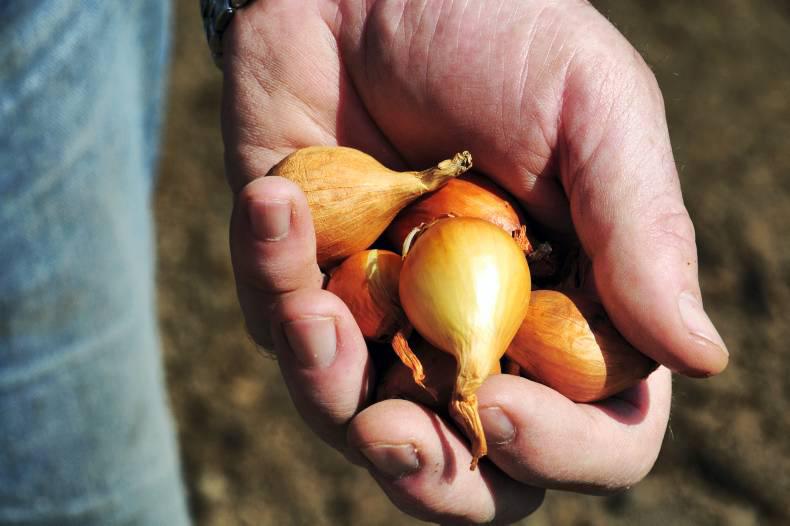Related to laburnum and flowering in early May, the yellow sophora is hardly recognisable as a laburnum relative.
It has a very unusual look, quite distinctive, and not confusable with other trees or shrubs. Kowhai is the Maori name for the plant, kowhai being the Maori word for yellow, and this species of sophora has yellow flowers.
Sophora tetraptera is a member of the pea family, with drooping tubular flowers. The colour is deep mustard yellow and in this species the flowers are carried before the leaves, or just as the leaves begin to emerge.
The yellow is not bright like that of forsythia, or even the yellow of wild gorse to which it is related, being pea family members. It is a deep honey colour, almost pushing towards light brown, but it is very visible and decorative.
The tree flowers from early April, although the season is a bit slow this year. The flowers are produced in generous quantities, massed along the drooping stems.
Each flower has a slender stem that the flower hangs from. The effect is a cascade of flowers, especially beautiful before the leaves begin to appear. The branches light up with the bunches of yellow tubes.
These tubular flowers do not look quite like the standard pea-type flowers of gorse or broom. They are more open at the mouth and tube-shaped.
The fertile parts of the flowers, the pistil and stamens, are extended forward out of the mouth of the flowers. The structure of the flowers has some of the features of fuchsia, phormium or embothrium, all three pollinated by humming birds.
The kowhai can grow to about four metres in our cool climate. It is often given wall space to encourage more flowers, but it is more handsome as a stand-alone specimen. It is hardy in most parts of the country, but is vulnerable to a hard frost in its early years. However, it’s usually fine when older. It should be well staked because it is prone to damage by wind.
There is another species called Sophora microphylla that is very similar in all aspects but is evergreen. The deciduous species, as most deciduous plants, is more hardy than the evergreen sort which tends to lose leaves in a cold winter. The leaves are smaller but have the same structure of leaflets in two matching rows.
Both of these trees have a certain foreignness about them that adds an exotic touch to the garden.
There is a superb species, Sophora japonica, which makes a much larger spreading tree that looks like a small ash tree with similar long leaves on green stems. This deciduous tree is magical in a warm climate where it produces masses of white pea-type flowers in late summer or September. It tends not to flower as well here in the cool, dull summers, but it can flower well if the summer is good. It needs some space to look its best and it is worth the room.
All kinds of sophora grow best in open, well-drained, sandy or gravelly soil – not too fertile and definitely not wet in winter.
Shallot sets
Shallot sets can be set out anytime between February and April. They come in earlier from an earlier planting, but are quick to mature in any case. Those planted in April will have plenty of time to ripen and will provide shallots to store into winter.
Shallots are related to onions, but they do not have the same hot substances as onions and are easier for those who find onions hard to digest. The flavour is onion-like but quite distinctive too, and favoured for some dishes. The sets are simply pushed into soft, well-tilled soil to the depth of the set and firmed in. Keep free of weeds until harvest.
This week
Fruit, veg & herbs
There was a good dry spell in mid- to late March and it was good for getting ground dug or tilled for sowing seeds. Seeds sown in such chilly weather with low night temperatures can be slow to germinate so it is wise to wait until soil temperatures rise a little.
Trees, shrubs & roses
When deciduous trees break bud, it is time to finish up any planting of bare-root deciduous trees or hedging. Evergreens, both broad-leaved and conifers, can be moved as new growth begins, so long as they are watched for water needs. Spray rose for blackspot disease if the bushes have suffered in previous years.
Flowers
Plant perennial flowers from pots and keep them watered until they make roots into surrounding soil. It is too early for bedding plants or baskets, except in exceptionally mild areas or where the containers can be grown in a greenhouse. Tidy flower borders.
Lawn
After a cold winter, many lawns have had a chilled brownish or purplish tinge. When it dries, apply some lawn fertilizer or high-nitrogen compound. The lawn should have been mowed a couple of times already. Do not delay or it will be scalped.
Greenhouse & house plants
Plants indoors or under cover should be well fed and watered if they are in active growth, otherwise wait a while. Check for pests, especially greenfly, and control these. In the next couple of weeks, sow sweet corn and courgette seeds for planting out at the end of May.






 This is a subscriber-only article
This is a subscriber-only article






SHARING OPTIONS: